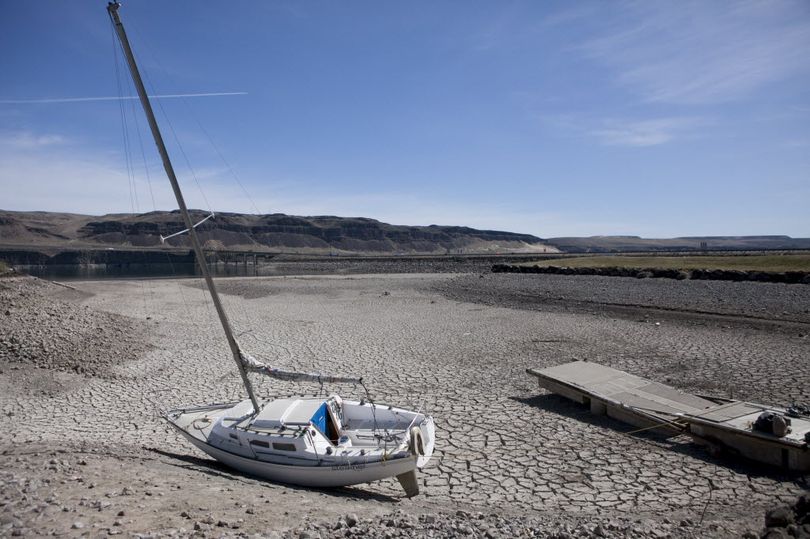Trucks ready to haul salmon around Wanapum Dam

FISHING – As construction workers race against the biological clocks of salmon to make fish ladders at Wanapum Dam operational, state fishery managers say they are standing ready with an alternate plan to truck spring chinook up the Columbia River.
Shortly after discovering a 65-foot-long fracture in a spillway pier Feb. 27, dam operators lowered the water level behind the 185-foot structure by a record 26 feet, leaving the fish ladders high and dry.
- See today's S-R story rounding up the impacts.
Sometime this week, the first of an estimated 20,000 spring chinook salmon are expected to arrive in the area near Vantage on their upriver run to spawn. Nearly 4,000 of those fish are wild, naturally spawning fish, and the entire run is listed as threatened under the federal Endangered Species Act.
The Grant County Public Utility District, which owns the dam, has been scrambling to modify the fish ladders to make them operational by April 15, but also worked with the Washington Department of Fish and Wildlife (WDFW) to develop a backup plan. Fish ladders at Rock Island Dam also are affected. Work to modify the ladders is estimated at $7 million.
“The stakes are very high, especially given the number of wild spring chinook involved,” said Jim Brown, regional WDFW director for northcentral Washington. “Grant County PUD is doing a great job, but all of us have a role to play in getting those fish upriver to spawn.”
Under the current plan, WDFW will intercept salmon at Priest Rapids Dam and truck most of them around Wanapum Dam, 19 miles upriver. Working in rotation, experienced drivers will haul the salmon in eight tanker trucks, each capable of moving up to 1,500 fish a day.
At the same time, a smaller number of hatchery-reared fish – identifiable by a clipped adipose fin – will be fitted with coded and radio tags and released from the Priest Rapids facility to negotiate the newly configured fish ladders at Wanapum Dam.
“The tags will allow us to track those salmon, and determine whether they are able to get over the dam on the reconfigured fish ladders,” Brown said. “That will tell us when it’s safe to suspend the trucking operation, and allow the fish to move past Wanapum on their own.”
That plan was unanimously approved by the Priest Rapids Coordinating Committee, a multi-jurisdictional organization established in 2004 to oversee hydroelectric projects in the mid-Columbia region.
Chelan PUD is also extending the fish ladders at Rock Island Dam, 38 miles upriver, to accommodate the drawdown in the Wanapum Pool. That work is also scheduled for completion today.
Brown said fishery managers are counting on the success of those measures to move fish upstream, because the trucking option will become less and less viable as larger runs of migrating salmon move into the area.
Starting in June, salmon managers are anticipating a run of up to 80,000 summer chinook, followed by 400,000 sockeye salmon and 300,000 fall chinook salmon.
“We can handle the spring chinook run with tanker trucks if that becomes necessary,” Brown said. “But there simply aren’t enough trucks, trained personnel, or hours in the day to move the number of salmon we’re expecting later in the year.”
